
 |
|
#41
|
|||
|
|||
|
And the Crack:
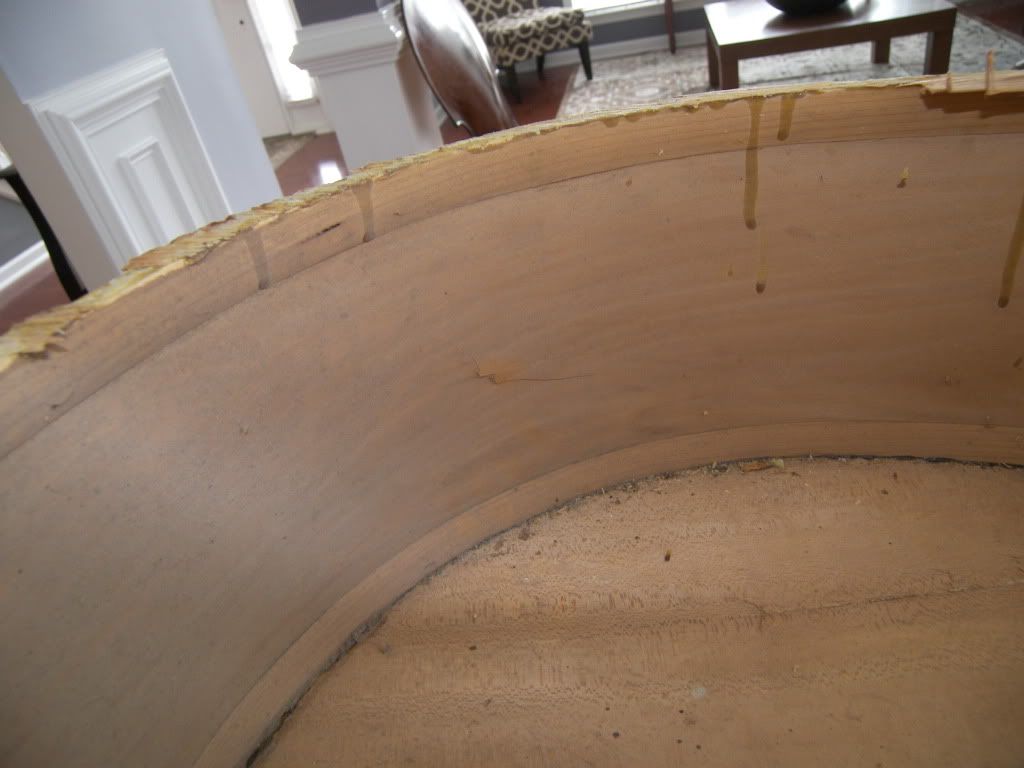 The patch:  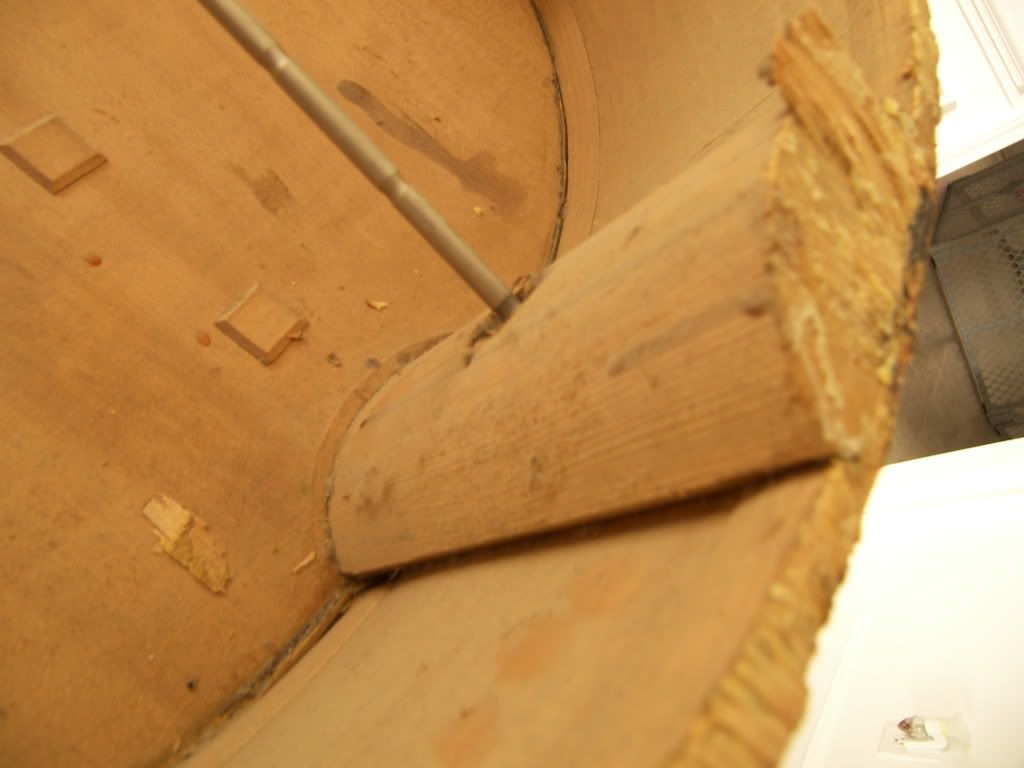 |
|
#42
|
|||
|
|||
|
hi Thomas, I got you... by the way what u think about the repairs?
|
|
#43
|
|||
|
|||
|
Ruben, with all due respect, next time you remove a bass top please be more patient, and get some more advice about doing so less destructively.
|
|
#44
|
||||
|
||||
|
I think you stand to learn a lot before this bass is closed up - no offense, it is a good project and I applaud your nerve - keep us posted but definitely take your time and ask questions if things don't seem right.
|
|
#45
|
|||
|
|||
|
Quote:
 . . I'm thinking now that I could used some heat or weaken the glue a little more.... |
|
#46
|
|||
|
|||
|
So I got the book, I just got it yesterday.... I am going to be doing my home work, I will do as much research as I can... I am going to work in the top first (no rush or anything)... now base on the information on the pictures, what in your professional opinions need to be done on the top plate... any advise???
|
|
#47
|
|||
|
|||
|
Have a look at Matthew Tucker's French Bass restoration thread-that's what good repair looks like. Notice the lack of glue globs, the obsessive neatness of the cleat placement and trimming, etc. His post is a textbook on how to do it right, as is the "restoration" section on his website.
|
|
#48
|
||||
|
||||
|
I have several restoration photos on my website of some famous instruments in restoration. Not a blow by blow but a gook look inside some very expensive basses, $50-$150k grade.
Matthew's work looks very nice but the more you see, the more you learn from. These two links here are master grade basses restored by one of the best that does work for all of the major New York Orchestras and 100k basses are common in this shop daily. One, and Two. I have 100s of restoration photos in my files from other master grade basses of mine and other basses worked on as well but I generally keep them private as they would scare most players. Like seeing a body opened up and then a year later the guy jogging. Once when having a root c**** and fitting at the dentist I had to take a bathroom break as this was going for hours. The dentist said "DON'T look in the Mirror!!" After washing my hands I looked up..    .. Now I knew why he said that.. .. Now I knew why he said that.. Post restoration photos are mush prettier to look at unless your are an experienced Emergency room attendee..  |
|
#49
|
|||
|
|||
|
Quote:
|
|
#50
|
|||
|
|||
|
Quote:
PS I have a good Idea of what to do by now, I am planning on practicing the procedure before I get to that bass Last edited by Ruben E garcia; 12-03-2010 at 02:41 PM. |
|
#51
|
||||
|
||||
|
If you can make your work as good and neat as that, you are doing the best possible. Sloppy work hurts the value and may need to be re-done as well, sooner than later.
|
|
#52
|
|||
|
|||
|
So I didnt have super long clamps that can reach deep into the top, so
I used Rare earth magnets....  I did work perfectly I did work perfectly 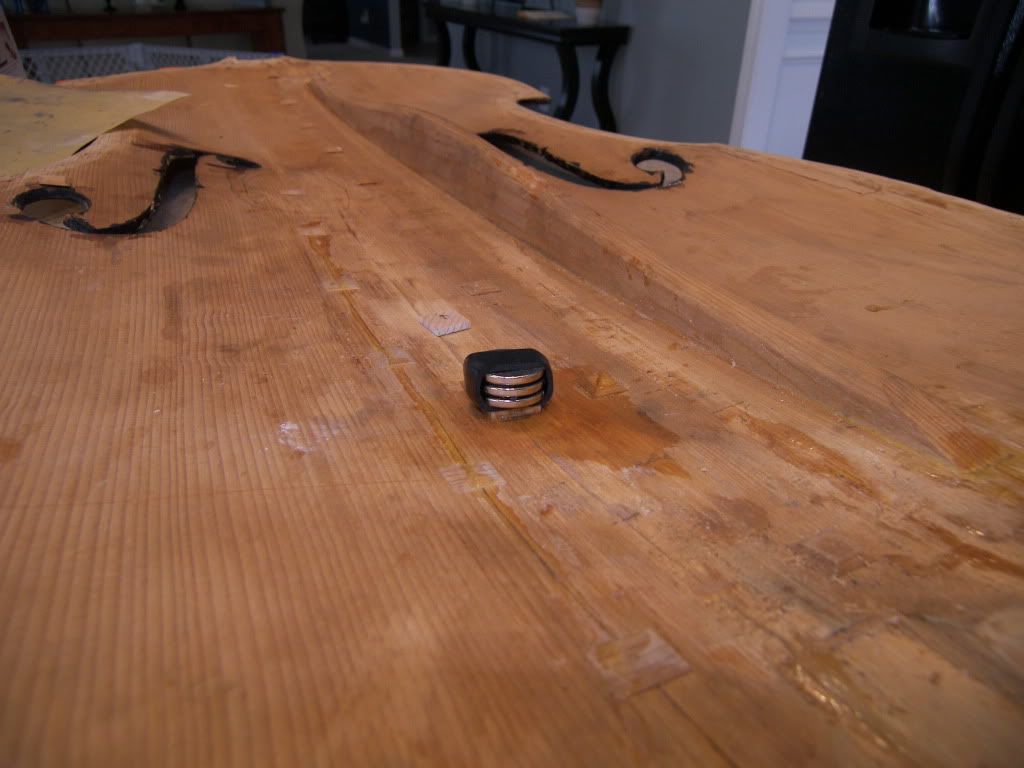 All the cleats, square shape at 45% Grain angle 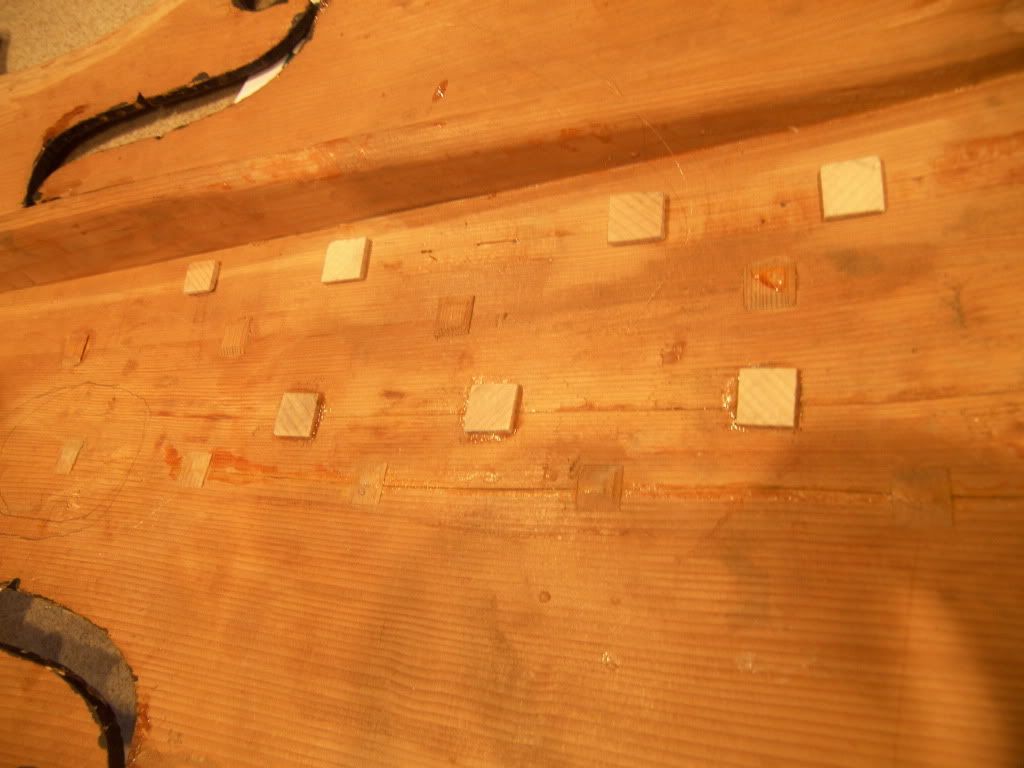 Chisel down (super sharp chisels  ), Scraped and Sanded.... ), Scraped and Sanded....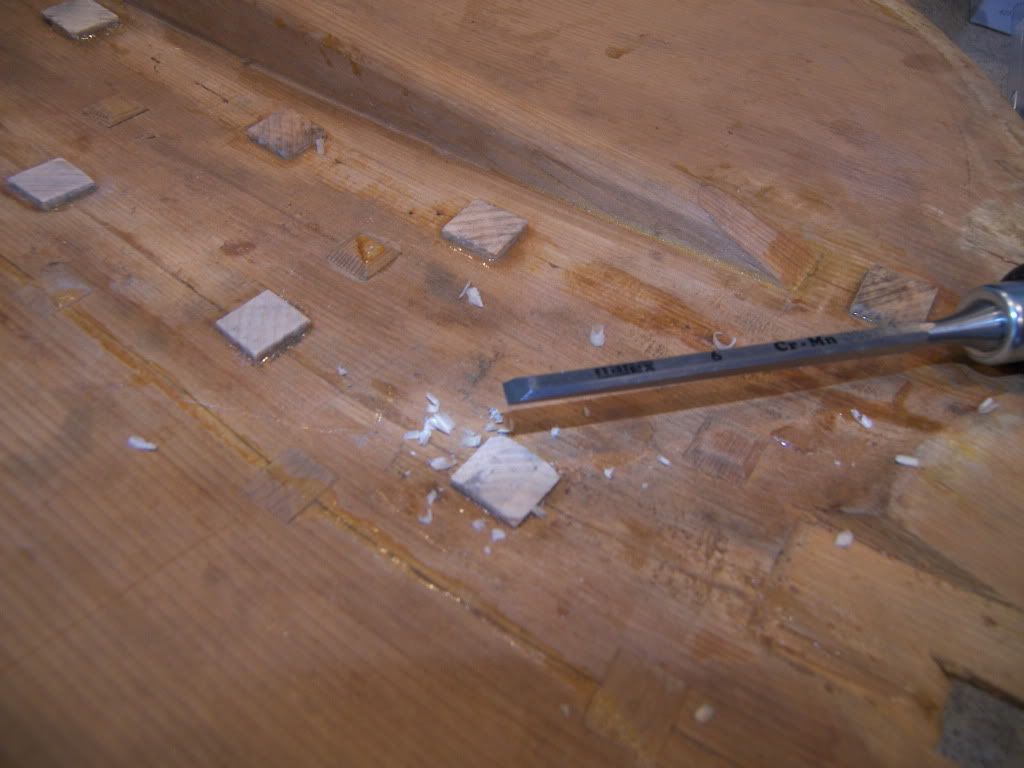 Final Result... They look good to me... I dont know about you guys 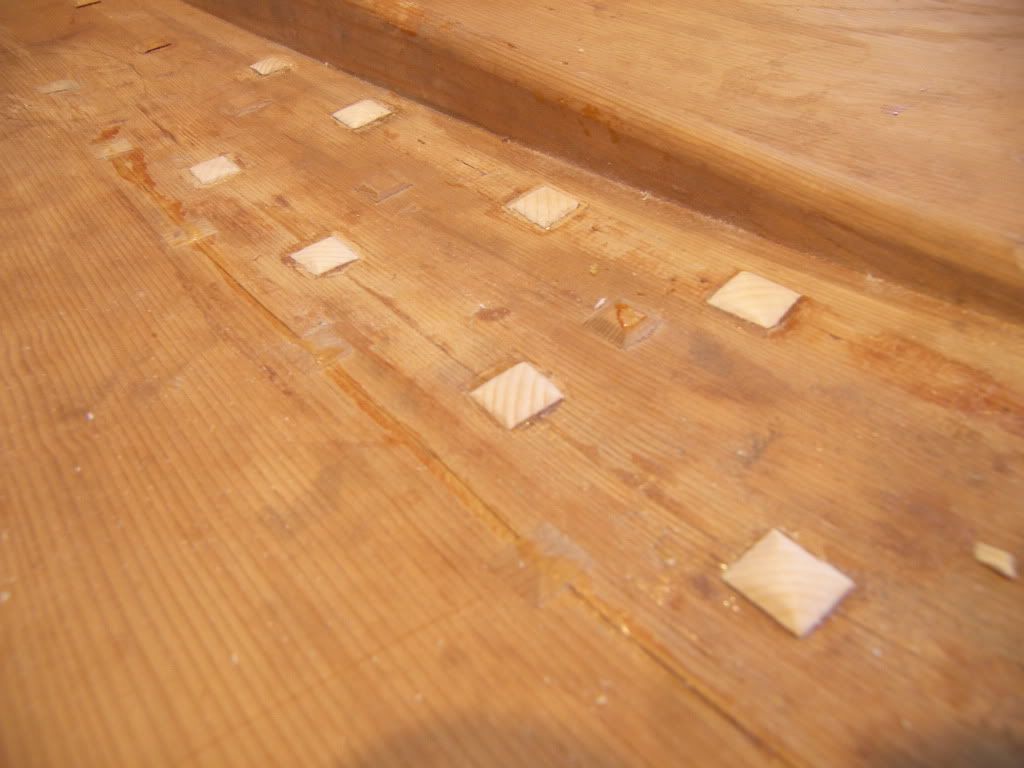 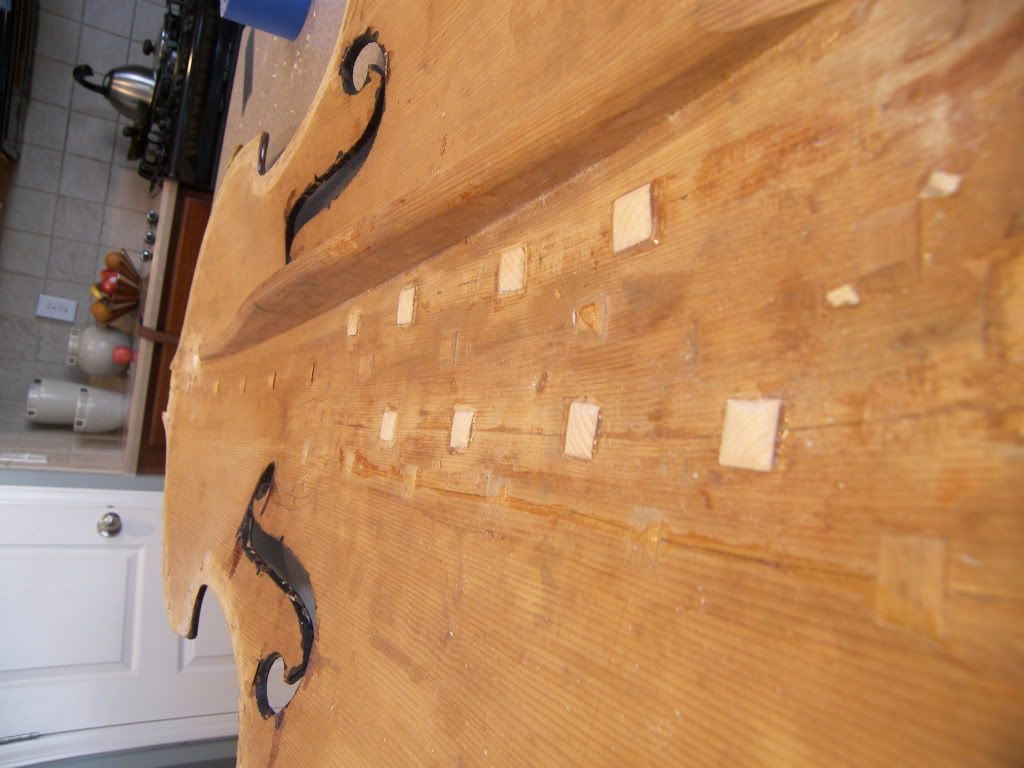 Couple notes.... I spoke to one of the local luthiers and he said that the old crack by the sound post looks sound... he recommended to ad a cleat in the north section of the crack and not to do a inlay patch... at least for now.... as for the lost of wood on the edges he suggest that an easy way to fix it is to use Wood epoxy.... I dont know anything about wood epoxy, sound scare sense ones the epoxy sets, I dont think I will be able to get it out in the case of a mistake.... could I use Hide glue for it, hummm...... i dont know if Hide G will build up or if it may react when I glue the top back?????  ... it need to study the case in deep ... it need to study the case in deep |
|
#53
|
||||
|
||||
|
Quote:
 It needs a sound post patch and the edges at least repaired with wood if not a full around half edging. I don't know who this guy is but it sounds like he can kill a good bass easily with his ideas.. NEVER Epoxy.  Never open up a bass and do half the work to 'see' it it holds. Do the proper sound post patch as it does need it. |
|
#54
|
|||
|
|||
|
Quote:
Ok Ken I see... I undestand.... 1) No epoxy... I wasnt really sure about that at all... but I wanted some feedback from you... 2) Now It needs a sound post patch... I will do it, I will take your advise and do one... now so I get the whole point of your comment... when I face with an sound post crack.. it needs a patch even is the crack is not open... so I think the guy who performed the last repair... that it looks very good by the way... should have done a sound post patch before closing this bass? may the the customer didnt want to pay for that repair.. I being told that is $1000 for a patch... Jesus that a little too much for that I can see why someone would say no to that  .... .... well like a said that's for your advise sound post patch is.... |
|
#55
|
|||
|
|||
|
Quote:
Thank you Wayne I'll look into it...  Last edited by Ruben E garcia; 01-16-2011 at 06:13 PM. |
|
#56
|
|||
|
|||
|
Consider also that lining up straight-edged cleats along a grain line can create a new fault line, resulting in a crack the next time the instrument is under excessive stress. Most current luthiers use diamond-shaped cleats because there is less strength at the grain line. Also, I believe yours are too far apart. Good on you for taking the criticism with an open mind and heart.
|
|
#57
|
|||
|
|||
|
Quote:
Thank for looking out after me... its hard but it need to be done the right way... and its a good experience... I just need to take a deep breath and take off all my beautiful cleats  |
|
#58
|
||||
|
||||
|
Quote:
I have seen more basses inside and out than most people and have seen along with that many styles of repair and modification. Fit all patches and pieces 100% dry before gluing and clamping them in. For me, I would rip out everything you have done and start over fresh and do it correctly. Just don't make things worse by damaging the bass while removing your recent work. Like Wayne said, you need the tools in hand before you start. In my opinion, this was a huge undertaking as your first project in bass repair. Did I say Undertaking? Sounds similar to Undertaker, the one who buries the dead. Don't kill your bass! When I buy basses or take them in trade, one of the things I ask is who did the previous repairs on the bass. Depending on who, it might cost double or triple to re-repair everything or I might just refuse to deal with a particular bass if I feel it's too far gone. I don't always see everything in advance but I sure try to. Do not become one of the repair people that makes it on the 'blacklist' of luthiers and basses worker on by to avoid. We have enough of them already. Most of them in my book. Like the guy who advised you to use wood epoxy? Geeze.. Talk to the young luthier Jed Kriegel who just spent a year picking junk glue like this out of an old bass which became one of the major parts of the restoration. It shouldn't have as that glue does not belong within a mile of any bass. Have fun..  |
|
#59
|
|||
|
|||
|
Reasons why I believe diamond cleats are superior:
1) Grain crosses at a 30-40 degree angle, rather than 90 degrees, therefore less tendency to come loose from seasonal wood movement. 2) Much longer reinforcement per cleat; less cleats required. 3) Less stiffening, due to the shape and the way the edges are tapered. 4) Looks really pretty. Of course square cleats have been used for centuries (as have diamonds), and they work ok. I just personally think diamonds are better, especially if the owner is female. (Private joke for Wayne) |
|
#60
|
||||
|
||||
|
Quote:
 |
 |
| Currently Active Users Viewing This Thread: 4 (0 members and 4 guests) | |
|
|